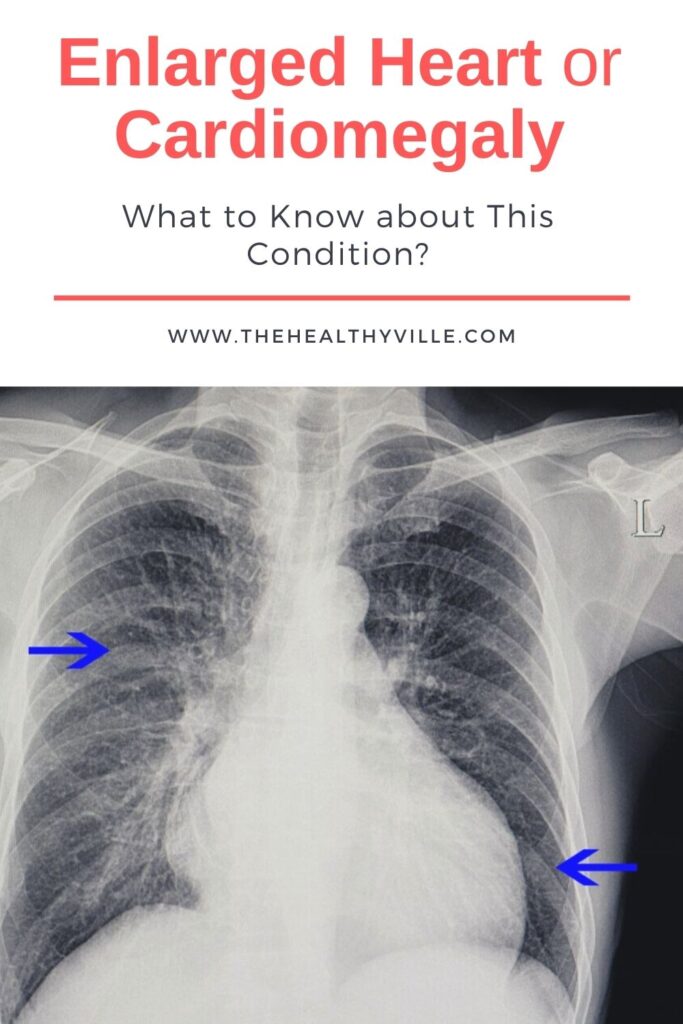An enlarged heart is not a disease as such. It usually occurs as a result of some disease that does not exhibit signs. Know more about it!
The term cardiomegaly means enlargement of the heart. It is often discovered unintentionally, in the search for a different disease.
An enlarged heart is not a disease as such. It usually occurs as a result of some pathology that does not always produce symptoms.
It can occur gradually over a few months, as in the case of pregnancy, or take years, as in the case of hypertension. Once a cardiomegaly has been detected it is necessary to perform studies to find the origin. Here we explain the causes and their effects on health.
What are the symptoms of cardiomegaly?
Cardiomegaly, generally speaking, does not produce symptoms. When it does produce them, they are unspecific. This is why it is essential to begin the search for the cause.
Sometimes, however, shows up as unexpectedly, while you’re trying to find the underlying reason for a different illness. For instance, a doctor may order an X-ray of the chest to look at the lungs and discover an enlarged heart.
When cardiomegaly produces symptoms, it is because the cause of the enlargement is very advanced. In people who have symptoms are the following:
- Shortness of breath with or without effort.
- Abnormal rhythm or arrhythmia.
- Palpitations.
- Leg swelling.
- Chest pain (angina).
- Nausea or lack of appetite.
Another characteristic of these symptoms is that people usually feel good at rest. Making efforts is when discomfort occurs.
What are the causes of enlarged heart?
The causes that produce an increase in the size of the heart are very diverse. The organ can become enlarged by thickened muscle or dilated; This results in an increase in size, but with decreased strength.
The following are the most common causes:
- High blood pressure: the heart has to beat harder, causing the heart to enlarge due to muscle thickening.
- Obstruction of the coronary arteries: when a heart attack has already occurred, a part of the heart stops working. The rest of the heart has to pump more to meet the needs.
- Heart valve abnormalities: There are four valves in the heart that direct the flow of blood in the right direction. The heart needs to work twice as hard if any of these four fail. This produces a thickening of the walls.
- Cardiomyopathy: This is a degenerative disease of the heart muscle.
- Pulmonary hypertension: in this pathology the pressure in the artery that connects the heart with the lungs is elevated. This puts a greater strain on the myocardium.
- Anemia: When there is a low level of iron in the blood, the heart must pump more to carry enough oxygen throughout the body.
- Abnormal rhythm or arrhythmia: This occurs when there is an increase in the heartbeat, a reduction or when they are irregular.
Are there risk factors?
People who may be at increased risk for cardiomegaly include those with the following history:
- High blood pressure or high blood pressure.
- Congenital or acquired alterations of the heart valves.
- Family history of cardiomegaly.
How do doctors diagnose it?
An enlarged heart may appear unintentionally, as a finding in a different study, because it does not always cause symptoms. Doctors perform the following test to diagnose it for certain:
- Chest X-ray: with this technique you can see the state of the lungs and the size of the heart. Other tests may be needed if on x-ray, there’s a dilatation of the heart.
- Electrocardiogram: can determine if the heart muscle is thickened. Arrhythmias, causing cardiomegaly, are also detected.
- Echocardiogram: This is the best test for diagnosing and monitoring an enlarged heart. It is similar to an ultrasound study.
- Cardiac computed tomography or magnetic resonance imaging: These techniques can determine if the heart is enlarged. As with the chest X-ray, they do not always provide information on the causes.
What is the treatment?
Treatment for cardiomegaly is to correct the cause. Among the approaches to attend the origin, the most frequent include the following:
- Control high blood pressure.
- Improve the pumping function of the heart.
- Correct arrhythmias or heart rhythm disturbances.
- Reduce the risk of blood clots.
- Repair the function of the heart valves.
Possible complications
The development of complications and the time for them to appear depends on the origin of the cardiomegaly. If you don’t get a diagnosis in a timely manner, the following may appear:
- Heart failure: This is when the heart does not pump properly.
- Arrhythmias: difficult to manage.
- Formation of thrombi or blood clots: due to an increase in the size of the heart chambers.
- Sudden death: in severe cases.
Can you prevent it?
There are many ways that the development of cardiomegaly can be prevented. If you already have a diagnosis, it is advisable to apply the following lifestyle changes:
- Give up smoking.
- Maintain the ideal weight.
- Eat a healthy diet.
- Control diabetes and blood pressure if present.
- Perform moderate physical activity with professional advice.
- Avoid consuming alcohol and caffeine.
- Have good sleep habits.
The most important point is to treat the alteration that caused the cardiomegaly. With proper treatment and lifestyle changes, it is possible to lead a normal life. Great results can be obtained if care is timely.
Don’t forget to SHARE everything you learned about cardiomegaly with your friends and family on your social networks!

